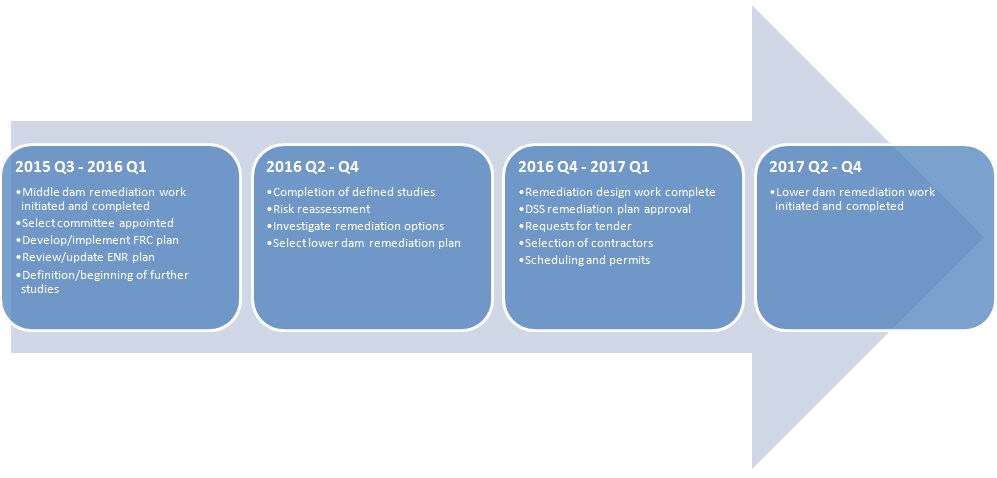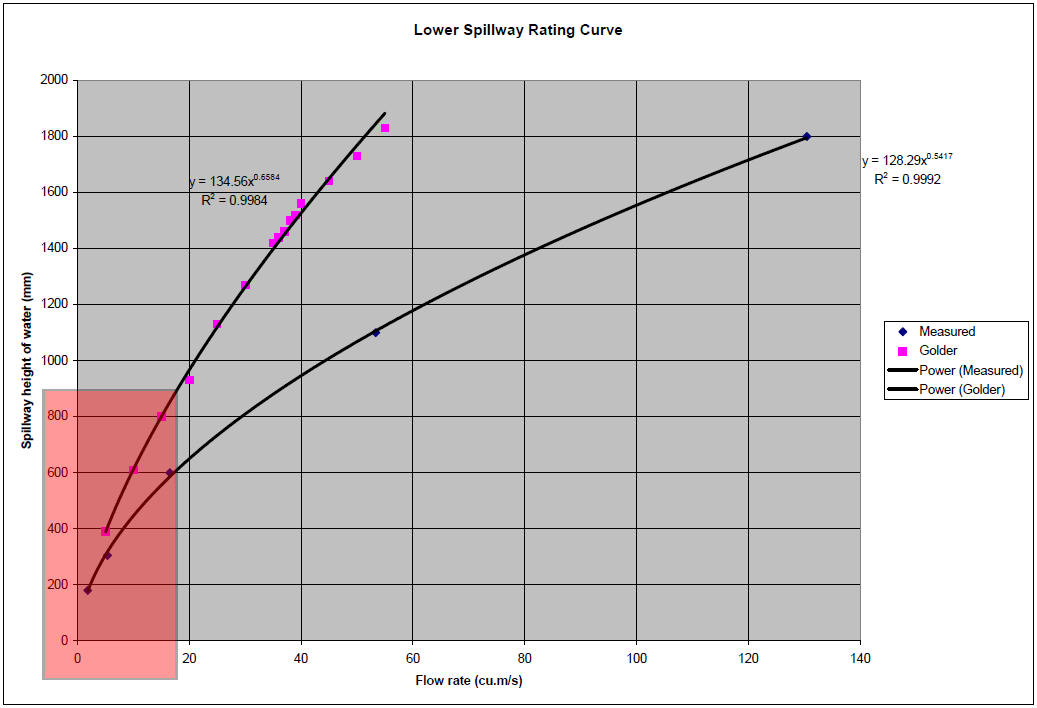Let’s Get The Facts Straight
It’s important to get the facts straight before making a decision. Simply put, there are a lot of factors involved including process failures and misinformation that has circulated. Although lengthy, this article contains the facts and is intended to help clear up the inconsistencies and misinformation that has been articulated throughout the years and continues to this day.
Rather than going through the complexities in full detail of where things began and how it went wrong – we’ll start with where we are at currently and what the city has proposed along with the constraints resulting from the current order, followed by details on the risk concerns as they are most pertinent towards past and current circumstances.
But first, let’s just get one thing straight. City Council does not consider the two options that have been currently presented to be acceptable options for the City of Nanaimo due to the nonsensical benefit-cost ratio (spending $3-10 million to prevent $2.5 million or less in potential risk), and the excessive amount of invasive destruction that would take place as a result within this Community Registered Heritage Park.
Currently the City of Nanaimo is in an extremely difficult position where an order is in place that effectively prevents Council and Staff from completing further progress towards the due diligence Council has determined necessary from its review of previously failed processes and incomplete information.
Council is faced with an order to decide upon options that Council does not consider to be in the community’s best interest, and are options which may well be in excess of what is required since Council does not have the sufficient information it needs to make a properly informed decision.
As a result, the City of Nanaimo filed a stay and appeal in order to try and have a reasonable amount of time to complete due diligence and explore other options.
Since that time, the stay has been denied (June 30, 2015), the appeal process is currently underway, and Council is determining next steps in the interim.
- On June 4, 2015, Council members met with Dam Safety Section officials in order to present a report (see report) and convey a better understanding of the circumstances to the officials so that a potential compromise could be reached and Council could finish the necessary due diligence towards design flood performance studies and select a remediation option which both meets regulatory requirements and satisfies the community’s best interests. According to Council, the DSS expressed their willingness to consider an alternate solution and encouraged Council to follow up at a later date with a proposal.
- On June 22, 2015, the City of Nanaimo provided the DSS with a proposal (see proposal) which addressed immediate risk concerns, expressed their need for a time extension to complete proper due diligence on the lower dam, reiterated their commitment towards ensuring that the dams meet regulatory requirements and committed to starting remediation on the middle dam upon acceptance of the proposal, and to complete any required work found necessary on both dams within the combined time frame that has been imposed on the middle and lower dams by starting remediation work with the middle dam followed by the lower dam.
- On June 24, 2015, the DSS rejected the proposal stating that it did not not satisfy the terms of the order, and as well, expressed that legal counsel is to be present if further discussions are to take place.
Overall Concerns
Significant progress has been made – all studies required to address seismic concerns have been completed, and some studies required to address flood concerns have began. Unfortunately overall, rushed decisions based on missing and incorrect information have resulted in the waste of a significant amount of funds. The dams have stood for over 105 years with no factual evidence of ever topping, and the studies completed to date show it to be of good condition.
The extreme sense of urgency to complete remediation immediately as per the terms of the order, is excessive – the potential waste of millions of dollars, needless destruction of the park, and potential damage to the fragile eco-system before being able to apply proper due diligence is not justified.
In the 2010 seismic assessment completed on the dams, it described significant concerns. The dams were considered unacceptable due to recently changed standards and within the inundation study of 2012 it was discovered and articulated that imminent danger to safety was inevitable if the dams were subjected to even a minor earthquake. Information had circulated throughout the community about how bad they were thought to be:
- Concrete dams crumbling and honey combed
- Rebar – there is no rebar
- Cascading failure of both dams in 3 minutes
- 150 people could perish
A plan was formulated to remove the dams. Powerful words were used to back this up, such as “Extreme Hazard”, “Enormous Liability”, and “Worst Dams in the Province”.
When the community was presented with this, there were varied concerns. Some were concerned about the obviously unacceptable risk that had been portrayed and expressed their support for immediate removal, while others had skepticism as they were concerned that these conclusions had been based primarily upon assumptive data. Based on common sense and logic, they could not comprehend the making of such an important decision which was estimated to cost the tax payers $30 million in remediation, and cause intrusion to the park that would likely result in its demise.
Previous Council, Staff and the DSS expressed strong resistance towards completing further studies before taking remediation action. Facing public outcry from the community due to the lack of factual supporting information, Doug White was instrumental in preventing the dams from being removed immediately and ensuring that a Technical Committee was formed, after which a motion was made to address the insufficient studies that had been identified by the Technical Committee.
Current Flood Concerns
Although only limited studies have been completed previously towards flood concerns, re-classification recommendations were made upon assumptive flood data. As a result the flood concerns as classified by DSS require significant remediation to address.
Resistance towards completing new studies which adequately address flood concerns was significant during the previous term of Council. In fact, the only flood concerns that were addressed within studies were of such limited scope that the results were inconclusive and ineffective towards making an informed decision. This is a direct result of previous Council and Staff attempting to encapsulate the studies within the remainder of funds available from the previously allocated resources for seismic.
Until new Council was in place, the City was essentially back to the same position it was placed in by Council, Staff, and the DSS – this time facing extreme flooding concerns rather than seismic, and of which the same failed process was being repeated that had already previously caused a premature sense of extreme urgency and a requirement to complete remediation immediately based on incomplete and unconfirmed information.
In November 2014, new Council was in place and began work on the various matters before them, including the significant concerns about the dams and the previous failed processes which had occurred.
In February 2015, Council directed Staff to reinstate the Technical Committee with expressed intent to define scope and proceed with further studies and continue working towards ensuring that the dams were within regulations. This motion was not acted upon by Staff due to technical complications articulated by Staff that the Technical Committee could not be reinstated.
In March 2015, Council directed Staff to work with the CDPPS to define scope and request further studies to be completed in order to work towards ensuring that the dams were within regulations.
This process began, with the previously articulated technical complications left behind. However, later during that month the City of Nanaimo was presented with the order for immediate remediation, and Staff was unable to complete work with the CDPPS in further defining scope and requesting further studies to be completed.
It was at that time that progress was interrupted and focus was shifted over to address the conditions of the order and determine how to proceed.
Design Flood Performance Studies
Flood performance studies differ from seismic and are crucial towards assessing risk and completing due diligence as they require studies based upon a different set of data points. Flooding events also occur in a very different manner to a seismic event – they are much slower and allow time for forecasting, early warning and evacuation.
In the limited flood studies that were completed, the hydrographs were able to reveal that the design flood conditions would result in a flood that is only hours in duration due to the watershed being small – the time to peak and subside is short. It is likely that during design flood conditions, large spread flooding would occur and is not limited to this area of Nanaimo. Residents will likely be inundated (and have already left their homes) even before the dams reach overtopping levels.
When focus was switched from seismic to flood risk, previously allocated funds were not sufficient to complete studies identified by Golder towards flooding and environmental risks and as a result remain uncompleted (on record from Golder – not enough money and time to explore). Flood performance was originally going to be part of the work from Golder but was somewhere dropped along the way.
Golder has stated in reports that they are providing expert opinions or other subjective estimates and assumptions based on various critical points because the data is not available due to the scope of studies requested and the available funding.
Engineer Statements of Study Limitations
Provided below are Golder statements within the June 2014 Risk Assessment, August 2014 Remediation Report, and November 2014 Consequence Classification referencing challenges and limitations to the studies due to scope, time restraints, budget, and assumptions.
Risk Assessment – July 2014:
“These predictions took into account the potential effectiveness of evacuation warnings and considered “incremental” consequences (i.e., consequences that are in addition to those that would occur if the dams were not there). For several scenarios, flooding or incremental consequences have been interpolated/extrapolated from the results of other scenarios, due to the high cost and time required for hydraulic modeling.”
Remediation Report – August 2014:
“A key project challenge was the tight timeframe, as there was a strong preference to carry out the options assessment and selection as well as detailed design and construction of the dam remediation in 2014.”
“Due to access, budget and time restraints, a test pit investigation program was considered optimal for collecting information on the properties of the dam fills on the downstream face, near the existing spillway and on the dam crest.”
“A third planned core hole (CH14-01) was not completed due to time constraints.”
“Due to time constraints, the development of the remediation options was carried out concurrently with the site investigation (Golder 2014a), the risk assessment (including the dam safety analyses, (Golder 2014b, c and d) and the dam re-classification. This parallel sequence of events required some assumptions during the options development, including the use of the design criteria for the previous dam classification (since the dam was not re-classified until later in the options development), as well as certain assumptions of how the risk assessment may be applied (since, for DSS, this was the first application of the risk assessment process for dam safety analysis in BC).”
“Due to time constraints, this list of initial options was developed in conjunction with a preliminary flow and scour analysis.”
“Due to poor supportability of the loose cinders and slag fill surface which might settle or move with time, construction difficulties of forming and placement of concrete on a steep surface, cost and time limitations, CRCS was not carried forward as an overtopping protection system.”
“In order to provide a consistent basis for comparison, the screened option assessment was based on a hydraulic capacity of 175m3/s. At the time this work was undertaken, the dams were both assigned a consequence classification of Extreme, and therefore a conservative flow requirement, slightly greater than the regulatory requirement (PMF), was selected. As noted in Section 4.0, the hazard classification for the Lower Dam was later reduced to Very High.”
Consequence Classification – November 2014:
“Although not studied and analysed in detail, a breach of the Lower Dam is expected to result in a release of most, if not all, of the contaminants into the downstream portions of the Chase River and on to the inundated low-lying areas to the Chase River. The consequences of this release of contaminated soils have been considered in the consequence classification for the Lower Dam, as described in the next section”
“Based on the review of the dam failure scenarios, it is likely that destruction of aquatic and terrestrial resources will occur and probable that the resulting flooding downstream from the dams would permanently alter or destroy habitat. The review of available online databases and literature sources suggest that the Study Area contains high value habitat and populations of many native species. It is Golder’s opinion that the environmental consequences of dam failure would likely be classed as “high” under Schedule 1 of the BC Dam Safety Regulations. This classification is described as “the significant loss or deterioration of the following:
Important fisheries habitat or important wildlife habitat;
– Rare or endangered species; or
– Unique landscapes or sites of cultural significance.
– Restoration or compensation in kind is highly possible.”
Golder has made the above statement with the limitation that an environmental assessment was not conducted.”


